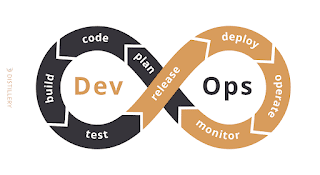DEVOPS(DEVELOPMENT AND OPERATIONS)
DEVELOPMENT AND OPERATIONS
DevOps, short for Development and Operations, is a collaborative approach that combines software development and IT operations to streamline the software delivery process and enhance overall efficiency. It involves the integration of people, processes, and tools to achieve continuous integration, continuous delivery, and continuous deployment of software applications.
Here is a description of DevOps:
Title: DevOps: Bridging the Gap between Development and Operations
Description:
DevOps is a methodology that revolutionizes the software development and delivery process by promoting collaboration, automation, and continuous improvement. It brings together development teams and operations teams to work together seamlessly, breaking down silos and fostering a culture of shared responsibility and accountability.
In the traditional software development lifecycle, development and operations teams often worked in isolation, leading to communication gaps, delayed deployments, and inefficient processes. DevOps aims to bridge this gap by integrating development, testing, deployment, and operations into a cohesive and iterative workflow.
By adopting DevOps principles and practices, organizations can achieve faster time to market, improved product quality, and increased customer satisfaction. DevOps emphasizes automation and infrastructure-as-code, allowing for the rapid and reliable provisioning of resources and environments. This enables developers to build, test, and deploy applications more efficiently and consistently across different platforms.
Continuous integration and continuous delivery (CI/CD) are core tenets of DevOps. Through CI/CD pipelines, developers can automate the process of integrating code changes, running tests, and deploying applications to production environments. This ensures that software releases are frequent, predictable, and reliable, reducing the risk of errors and downtime.
DevOps also promotes a culture of monitoring and feedback. By leveraging monitoring tools and practices, organizations can gain real-time insights into application performance, infrastructure health, and user behavior. This data-driven approach enables proactive troubleshooting, rapid incident response, and continuous optimization of systems and applications.
Collaboration and communication are fundamental aspects of DevOps. Development and operations teams work closely together, sharing knowledge, insights, and responsibilities. By breaking down silos and fostering cross-functional collaboration, organizations can accelerate innovation, enhance problem-solving capabilities, and drive continuous learning and improvement.
In summary, DevOps is a transformative approach that aligns development and operations teams to achieve faster, more reliable, and efficient software delivery. By embracing DevOps principles and practices, organizations can enhance collaboration, automation, and continuous improvement, driving business agility and enabling the rapid delivery of high-quality software products.
Note: This is just a sample description for DevOps. You can customize and modify it according to your specific requirements and target audience.



Comments
Post a Comment